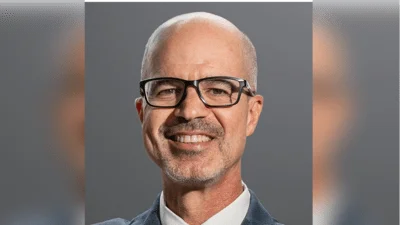WHAT:
The Subcommittee on Communications and Technology held a hearing to discuss bipartisan legislation to improve the 9-1-1 system and strengthen public safety communications. The bills examined today included:
* H.R. 6424, the 9-1-1 Fee Integrity Act, sponsored by #SubCommTech Vice Chairman Leonard Lance (R-NJ) and Rep. Anna Eshoo (D-CA). The bill would direct the Federal Communications Commission (FCC) to issue rules, within six months of enactment, that would designate what is and is not an acceptable use of 9-1-1 fees collected by State, local, and Tribal governments.
* H.R. 5700, the National Non-Emergency Mobile Number Act, introduced by Reps. Susan Brooks (R-IN) and Eshoo. The bill would direct the FCC to start a proceeding to designate a national abbreviated dialing code for mobile-device users to reach public safety personnel in critical, but non-emergency, circumstances.
* H.R. 6003, the Anti-Swatting Act of 2018, introduced by Rep. Eliot Engel (D-NY) and #SubDCCP Vice Chairman Adam Kinzinger (R-IL). The bill would stiffen criminal penalties against those who intentionally transmit false or misleading caller ID information to Public Safety Answer Points with an intent to trigger an emergency response from law enforcement and first responders when in fact there is no threat to life, health or property.
WHY:
“Whether at home or at school, our children learn at an early age that when an emergency strikes, you should dial 9-1-1. But like all technology systems, our 9-1-1 systems must be preserved and improved to deliver potentially life-saving services reliably and seamlessly when called upon," said Energy and Commerce Committee Chairman Greg Walden (R-OR).
“Under the New and Emerging Technologies 911 Improvement Act of 2008, the Federal Communications Commission is required to submit a report to Congress on state collection and distribution of 9-1-1 and enhanced 9-1-1 fees and charges. These reports have shed light on a handful of states who have been raiding these 9-1-1 fees and diverting the funds for unrelated purposes. This unacceptable practice leaves counties and localities on the hook for maintaining and upgrading their systems, endangering public safety," said #SubCommTech Vice Chairman Lance.
WHO:
* James Curry, Communications Division Head, Hunterdon County, New Jersey Department of Public Safety (Opening Statement )
* Eddie L. Reyes, Director, Public Safety Communications, Prince William County Government (Opening Statement )
* Paul Starks, Director, Public Information Office, Montgomery County Police Department (Opening Statement )
KEY MOMENTS:
Mr. Curry discussed how his state of New Jersey remains the worst offender in the nation in diverting 9-1-1 fees.
“I was requested to appear today before this committee to discuss H.R. 6424, the 9-1-1 Fee Integrity Act, because, in my State when you pay certain fees on your phone bills called 9-1-1 fees - it doesn’t finance what one might expect. According to the New Jersey Association of Counties & New Jersey Wireless Association, the State collects approximately $120 million dollars annually in consumer surcharges as 9-1-1 System and Emergency Response fees and deposits into a trust fund. However, according to the FCC, since 2006 only 11% of the $1.3 billion collected has been spent on eligible expenses. None of the money has been used to fund those eligible expenses at the local 9-1-1 level," Mr. Curry told the subcommittee.
Mr. Starks spoke to how swatting calls, the act of using misleading or inaccurate caller ID information with an intent to trigger a law enforcement response where no real emergency exists, drains resources and puts law enforcement and innocent bystanders in harm’s way.
He provided an example to the subcommittee, remarking, “In the recent past, Montgomery County has received multiple swatting calls, one event involved a message claiming that bombs had been planted in a Silver Spring high school which lead to an emergency response by public safety and an evacuation approximately 2,000 students and staff. This call was ultimately determined to have come from out-of-state. Fortunately, there were no reported injuries, but resources were deployed, teaching and learning came to a halt, and due to the weather, students and staff had to be housed at other nearby schools and places of worship, causing further disruption. This doesn’t begin to address the cost of the long-term investigative efforts and the potential emotional toll taken on students and staff who are affected by the call."
Mr. Reyes commented on the life-saving benefits that will come with the transition to Next Generation 9-1-1 technologies.
He said, “Today’s 9-1-1 is not the 9-1-1 we grew up with. Some states and localities have transitioned to advanced IP-based calltaking and dispatch functions, trading notepads and light boards for half a dozen computer monitors, three keyboards, and high-speed internet connections. These advances, part of the transition to Next Generation 9-1-1, will allow a far more robust connection between a caller and public safety, and will provide 9-1-1 with the tools to better guide incident response and save lives."
RESOURCES:
The Majority Memorandum, witness testimony, and an archived webcast are available online HERE.





